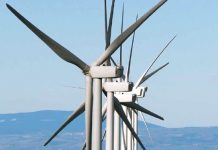The backlog of new power generation and energy storage seeking transmission connections across the U.S. grew again in 2023, with nearly 2,600 GW of generation and storage capacity now actively seeking grid interconnection, according to new research from Lawrence Berkeley National Laboratory (Berkeley Lab).
Active capacity in U.S. interconnection queues increased nearly eight-fold over the last decade and is now more than twice the total installed capacity of the existing U.S. power plant fleet.

The queues indicate particularly strong interest in solar, battery storage, and wind energy, which together accounted for more than 95 percent of all active capacity at the end of 2023.
But this growing backlog has become a major bottleneck for project development: Proposed projects are mired in lengthy and uncertain interconnection study processes, and most interconnection requests are ultimately canceled and withdrawn.
The Federal Energy Regulatory Commission (FERC) adopted major interconnection reforms in 2023 that have not yet taken effect in most regions; project developers continue to cite grid interconnection as a leading cause of project delays and cancellations.
Submitting an interconnection request and completing the requisite grid studies is only one of many steps in the development process; projects must also have agreements with landowners and communities, power purchasers, equipment suppliers, and financiers, and may face transmission upgrade requirements. Data from these queues nonetheless provide a general indicator for mid-term trends in power-sector activity and energy-transition progress.
Berkeley Lab compiled and analyzed data from the seven organized electricity markets (RTO/ISOs) in the U.S. and an additional 44 balancing areas outside of RTO/ISOs, which collectively represent more than 95 percent of currently installed U.S. electricity generation.
“It is promising to see the unprecedented interest and investment in new energy and storage development across the U.S., but the latest queue data also affirm that grid interconnection remains a persistent bottleneck,” said Joseph Rand, an energy policy researcher at Berkeley Lab and lead author of the study.
“The new rules from FERC will be a step in the right direction when implemented, but it is increasingly clear that additional solutions to interconnection problems are essential to maintain grid system reliability amidst rising electricity demand and utility- and state-level clean-energy goals.”
U.S. electric demand is projected to increase considerably in coming years, with a resurgence in U.S. manufacturing alongside demand from new data centers, electric vehicles, and building electrification.
More info www.lbl.gov



























